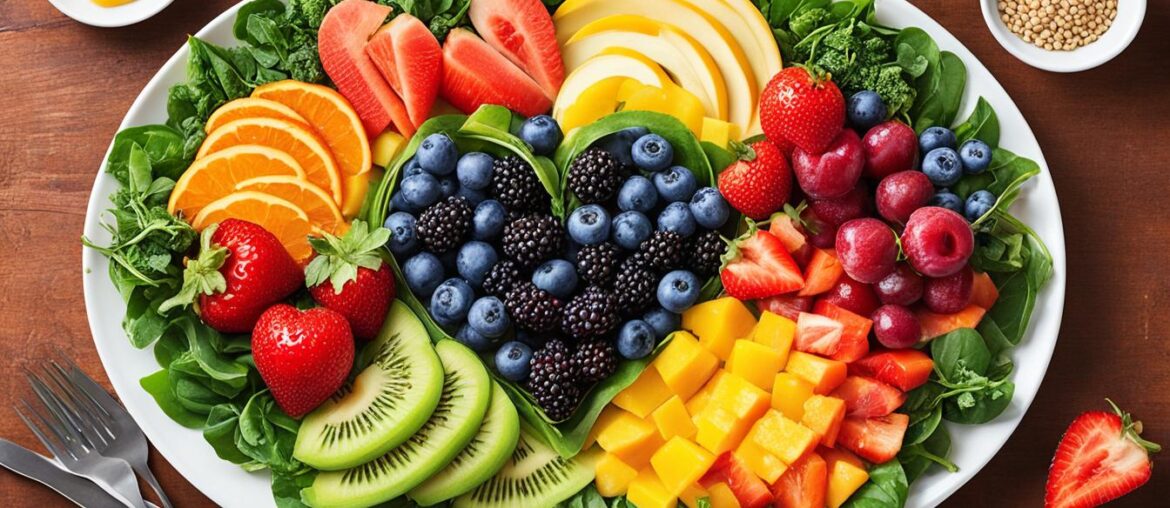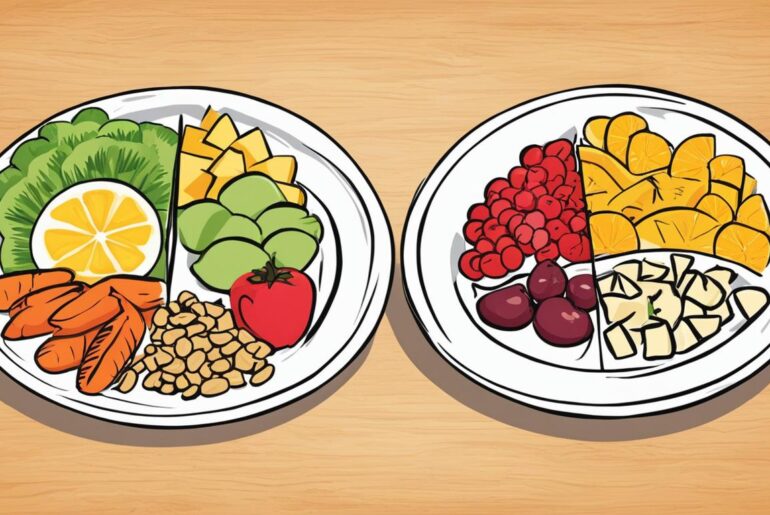When it comes to losing weight and improving overall health, adopting a heart-healthy diet can be an effective strategy. Not only does it promote weight loss, but it also provides numerous benefits for cardiovascular health. By incorporating heart-healthy foods, following nutritious eating plans, and implementing healthy eating habits, you can achieve your weight loss goals while taking care of your heart.
A heart-healthy diet focuses on consuming nutrient-rich foods that are low in saturated and trans fats, cholesterol, and sodium. It emphasizes incorporating whole grains, lean proteins, fruits, vegetables, and healthy fats into your meals. These foods provide essential nutrients, vitamins, minerals, and antioxidants that support overall well-being.
Additionally, a heart-healthy diet can help you shed unwanted pounds and trim your waistline. Research has shown that losing visceral belly fat, which is located deep within the abdomen and surrounds vital organs, can significantly reduce the risk of developing Type 2 diabetes and heart disease, as well as decrease the risk of mortality from these diseases.
Incorporating belly-fat-burning foods, such as whole grains, green tea, and eggs, into a reduced-calorie eating plan can further enhance weight loss efforts. Combining calorie reduction with increased physical activity has also been found to be an effective strategy in reducing belly fat.
To assist you in achieving your weight loss goals and adopting a heart-healthy lifestyle, this article will explore different heart-healthy meal plans, including the Flexitarian Diet, Volumetrics Diet, WW Program, and the EatingWell Flat-Belly Diet Plan. Each diet offers its own unique approach to weight loss, allowing you to choose the one that aligns with your personal preferences and fits seamlessly into your lifestyle.
Key Takeaways:
- Adopting a heart-healthy diet promotes weight loss and improves cardiovascular health.
- Heart-healthy foods are low in saturated and trans fats, cholesterol, and sodium.
- Losing visceral belly fat reduces the risk of developing Type 2 diabetes and heart disease.
- Including belly-fat-burning foods in a reduced-calorie eating plan can enhance weight loss efforts.
- Combining calorie reduction with increased physical activity is an effective strategy for reducing belly fat.
The Importance of Belly Fat Reduction
Excess visceral belly fat poses significant health risks, including an increased likelihood of developing Type 2 diabetes, heart disease, and even certain cancers. Research has shown that reducing overall body fat can help decrease visceral fat as well. Incorporating certain belly-fat-burning foods into a reduced-calorie eating plan can further support this effort. Combined with regular exercise, this approach has been proven effective in significantly reducing belly fat.
Excessive visceral belly fat is associated with a higher risk of developing chronic conditions such as Type 2 diabetes and heart disease, as well as an elevated mortality risk due to these diseases.
A reduced-calorie eating plan that includes belly-fat-burning foods is crucial in combating excess belly fat. These foods have properties that specifically target and eliminate visceral fat, helping to reduce the risk of associated health complications.
Physical activity, especially targeted exercises that engage the abdominal muscles, can effectively burn belly fat. Additionally, incorporating cardiovascular exercises and strength training into your fitness routine can further contribute to belly fat reduction.
“Reducing visceral belly fat is not only about achieving a flatter stomach; it is about improving your overall health and reducing the risk of serious medical conditions.” – Dr. Jane Turner, Ph.D., Director of Nutrition Research
The Role of Belly-Fat-Burning Foods
Belly-fat-burning foods are highly recommended as part of a reduced-calorie eating plan aimed at belly fat reduction. These foods typically have properties that aid in fat metabolism, promote fullness, and help regulate blood sugar levels. Including these foods in your diet can accelerate the process of shedding unwanted belly fat.
Some examples of belly-fat-burning foods include:
- Fatty fish such as salmon and mackerel, which are rich in omega-3 fatty acids
- Green leafy vegetables like spinach and kale, which are packed with antioxidants
- Whole grains such as quinoa and brown rice, which provide fiber and keep you feeling satisfied
- Nuts and seeds, which offer a good combination of protein, healthy fats, and fiber
- Greek yogurt, a probiotic-rich food that promotes a healthy gut and aids digestion
By incorporating these flat-belly foods into your meals and snacks, you can optimize your efforts to reduce belly fat and improve your overall health.
| Flat-Belly Foods | Benefits |
|---|---|
| Fatty fish | Rich in omega-3 fatty acids, which help reduce inflammation and promote heart health |
| Green leafy vegetables | High in antioxidants and fiber, which aid digestion and contribute to a feeling of fullness |
| Whole grains | Provide fiber and complex carbohydrates, keeping you satisfied and supporting healthy digestion |
| Nuts and seeds | Offer a combination of protein, healthy fats, and fiber, promoting satiety and overall wellness |
| Greek yogurt | A probiotic-rich food that supports gut health and aids in proper digestion |
By adopting a reduced-calorie eating plan that includes belly-fat-burning foods and incorporating regular exercise, you can effectively reduce visceral belly fat and improve your health in the process.
The Flexitarian Diet for Weight Loss
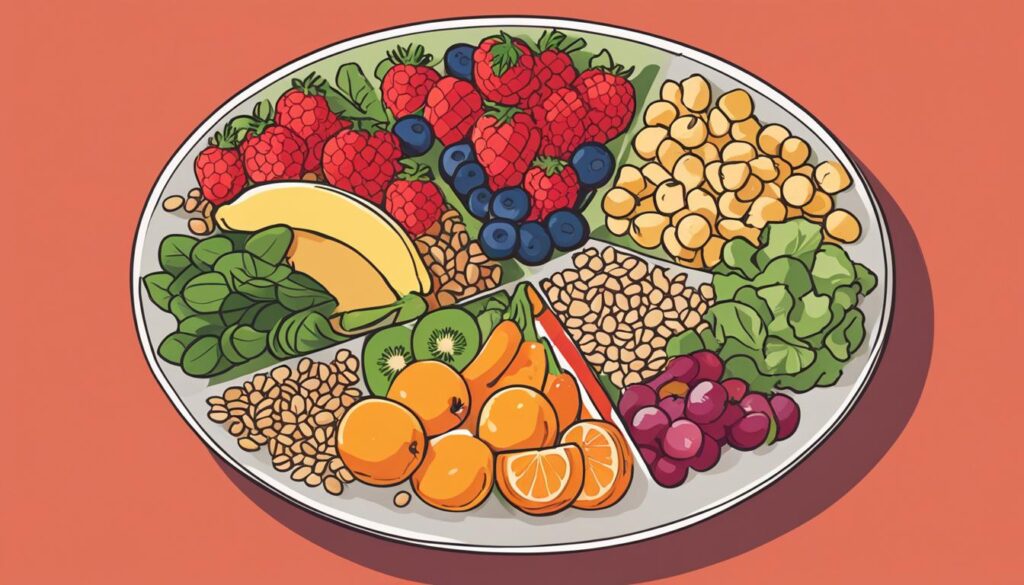
The flexitarian diet is a popular approach for individuals looking to lose weight and improve their overall health. It is a mostly plant-based diet that allows for flexibility in consuming meat, making it more sustainable and realistic for many people. By incorporating more plant-based meals into one’s diet, individuals can naturally lower their calorie intake and promote weight loss.
A key benefit of the flexitarian diet is its focus on plant-based foods, which tend to be lower in calories and higher in fiber. This combination can contribute to weight loss and lower BMIs. Research has shown that individuals following a plant-based diet tend to have lower body weights and reduced risks of chronic diseases, such as heart disease, cancer, and type 2 diabetes. Plant-based meals are typically rich in nutrients, high in fiber, low in sugar, and low in fat, providing a host of health benefits.
I personally find the flexitarian diet to be a highly effective and sustainable weight loss approach. By incorporating more plant-based meals into my diet, I have been able to limit my calorie intake while still enjoying a wide variety of delicious and nutritious foods.
In addition to weight loss, the flexitarian diet offers other significant health benefits. The high fiber content of plant-based meals improves digestion and promotes feelings of fullness, which can help control appetite and prevent overeating. Plant-based diets have also been shown to lower blood pressure and reduce the risk of developing chronic diseases.
If you’re considering the flexitarian diet for weight loss, it’s important to focus on incorporating a variety of plant-based foods, such as fruits, vegetables, whole grains, legumes, nuts, and seeds. Including sufficient protein from plant sources, like tofu, tempeh, legumes, and quinoa, is crucial for meeting nutritional needs. It’s also essential to limit the consumption of meat and choose lean sources when incorporating it into meals.
The flexitarian diet allows for flexibility, making it easier to adhere to in the long term. By adopting this approach, individuals can achieve their weight loss goals while enjoying a varied and satisfying diet that promotes overall health and well-being.
The Volumetrics Diet for Weight Loss
The Volumetrics diet is a popular approach to weight loss that emphasizes the quantity of foods consumed, while still focusing on nutrient density. By choosing foods that are high in fiber and water content, such as fruits and vegetables, you can fill up on lower calorie options without sacrificing satisfaction.
The key to the Volumetrics diet is understanding the concept of energy density, which refers to the number of calories in a given volume of food. By opting for foods that are low in energy density, you can eat larger portions while still staying within your calorie goals. This allows you to feel more satisfied and reduces the chances of overeating.
One of the main principles of the Volumetrics diet is to include plenty of high-fiber foods. Fiber-rich foods not only help to keep you feeling full, but they also aid in digestion and promote overall gut health. By incorporating foods like whole grains, legumes, and vegetables into your meals, you can increase your fiber intake and boost the nutrient content of your diet.
Another important aspect of the Volumetrics diet is focusing on low-calorie options. By choosing foods that are naturally low in calories, such as lean proteins, fruits, and vegetables, you can still enjoy satisfying meals while staying within your calorie limits. This approach allows you to create balanced and nutritious meals that support your weight loss goals.
In addition to emphasizing healthy portion sizes, the Volumetrics diet encourages regular meals and snacks throughout the day. This helps to prevent excessive hunger and reduces the likelihood of overeating. By spacing out your meals and incorporating nutritious snacks, you can maintain stable blood sugar levels and keep your metabolism functioning optimally.
The Volumetrics diet offers a sustainable and effective approach to weight loss by focusing on the quantity and quality of foods consumed. By incorporating high-fiber, low-calorie options and practicing healthy portion control, you can achieve your weight loss goals while still enjoying delicious and satisfying meals (check this post out).
The WW (Weight Watchers) Program for Weight Loss

The WW program, formerly known as Weight Watchers, is a popular and effective weight loss program that utilizes a points-based approach to food intake. With its focus on calorie counting, portion control, and accountability, WW offers a balanced diet plan that can help individuals achieve their weight loss goals.
The key concept behind the WW program is assigning a certain number of points to each food based on its nutritional value. Participants are given a daily points target, and they can choose any food they want as long as they stay within their allotted points. This points-based approach encourages individuals to make healthier choices and practice portion control, ultimately leading to weight loss.
By counting calories and tracking food intake, WW provides a system of accountability that helps individuals stay on track with their weight loss journey. Research shows that tracking food intake can promote weight loss because it creates awareness of eating habits and encourages mindful eating.
“The WW program’s points-based approach offers an effective way to control calorie intake and make healthier food choices. By tracking your daily points, you can stay accountable to your weight loss goals and develop sustainable habits for a balanced diet.”
In addition to the points-based system, WW emphasizes the importance of a balanced diet. The program encourages individuals to incorporate a variety of fruits, vegetables, lean proteins, whole grains, and healthy fats into their meals and snacks. This balanced approach ensures that participants are getting the necessary nutrients while still managing their calorie intake.
To support individuals on their weight loss journey, WW offers in-person and virtual support through workshops, coaching, and an online community. This support system provides guidance, motivation, and the opportunity to connect with others who are also working towards their weight loss goals.
Overall, the WW program is a well-rounded and effective approach to weight loss. With its points-based system, calorie counting, accountability, and emphasis on a balanced diet and portion control, WW provides individuals with the tools and support they need to achieve sustainable and long-term weight loss.
The Benefits of the WW Program for Weight Loss:
- Flexible points-based approach
- Encourages balanced and portion-controlled meals
- Promotes calorie counting and food tracking
- Provides accountability and support
- Emphasizes a balanced diet and portion control
Considerations When Following the WW Program:
- Individual results may vary
- Requires commitment and tracking
- Adapting to the points-based system
- May involve attending meetings or accessing online resources
The Benefits and Considerations of the EatingWell Flat-Belly Diet Plan
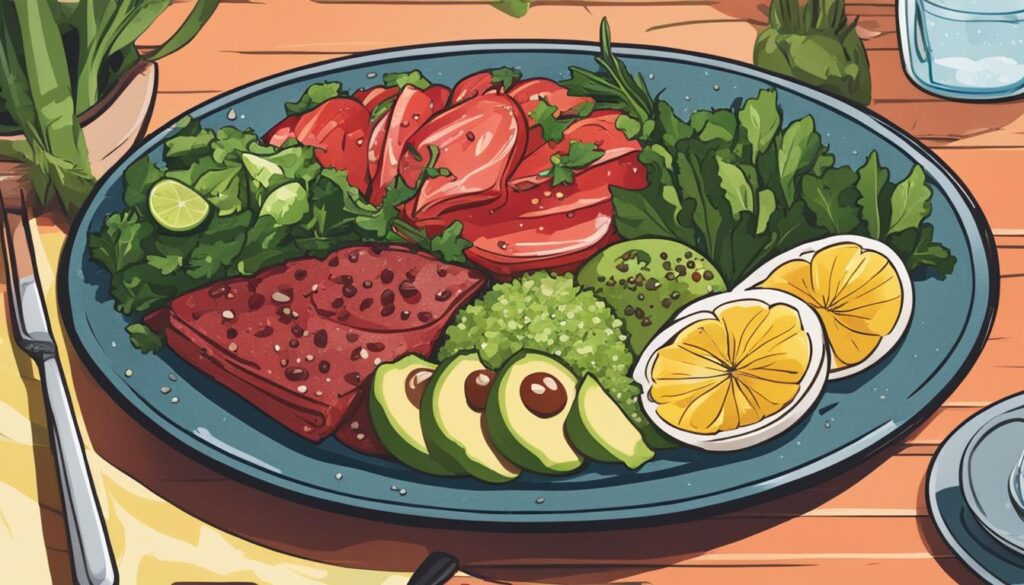
The EatingWell flat-belly diet plan offers numerous benefits for those seeking to reduce visceral belly fat and improve overall health. This plan focuses on incorporating fiber-rich foods and probiotic foods into your meals to support gut health and facilitate weight loss. By including nutrient-dense meals that are rich in essential nutrients, vitamins, minerals, and antioxidants, you can fuel your body with what it needs to thrive.
A two-year study conducted on this diet plan found that consuming more nutrients, particularly soluble fiber, can help lower visceral belly fat gain, aiding in achieving a slim and toned midsection. With a strong emphasis on exercise, sleep, and stress reduction, the EatingWell flat-belly diet plan promotes holistic well-being beyond just weight loss.
One of the key advantages of this diet plan is the incorporation of high-fiber and water-rich plant-based meals. These meals not only improve digestion but also boost the immune system and enhance hydration. By consuming fiber-rich foods, you can optimize your digestive health and reduce bloating, contributing to a flatter belly and improved overall wellness. Probiotic foods included in the EatingWell flat-belly diet plan also support gut health, promoting a healthy digestive system and immune function.
Here is an example of a one-day meal plan from the EatingWell flat-belly diet:
| Meal | Food | Portion Size |
|---|---|---|
| Breakfast | Oatmeal with berries and flaxseeds | 1 cup |
| Lunch | Quinoa and vegetable salad | 1 serving |
| Snack | Greek yogurt with mixed nuts | 1 serving |
| Dinner | Grilled chicken with roasted vegetables | 1 serving |
| Snack | Cucumber slices with hummus | 1 serving |
By following the EatingWell flat-belly diet plan, you can enjoy delicious meals while working towards your weight loss and health goals. Remember to consult with a healthcare professional before starting any new diet plan, especially if you have any underlying health conditions or dietary restrictions.
Sample Meal Plans for a Heart-Healthy Diet
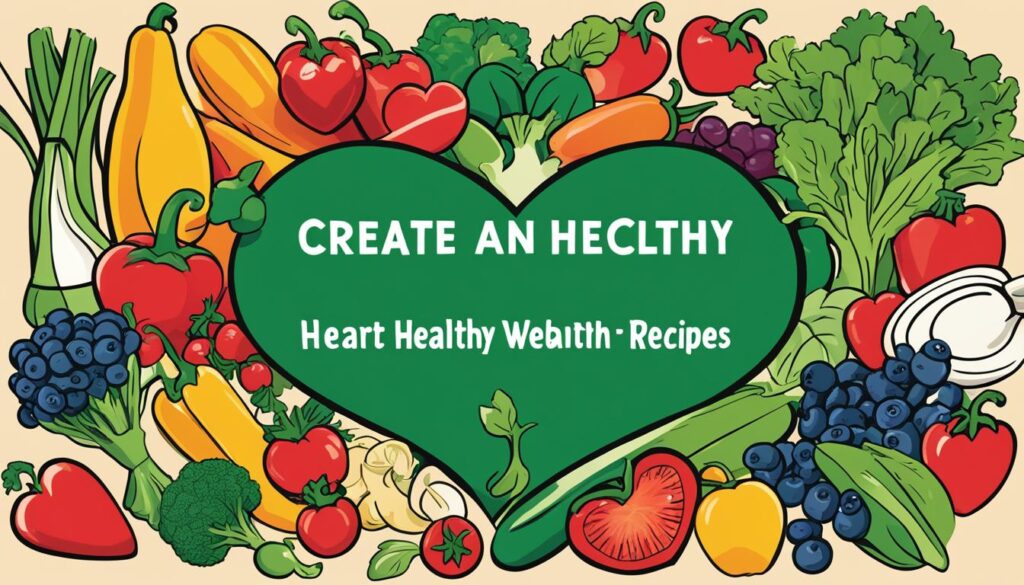
As part of a heart-healthy diet designed for weight loss, I have created sample meal plans that incorporate delicious and nutritious recipes. These meal plans are carefully crafted to align with recommended calorie intake for weight loss goals, ensuring you can achieve your desired results while enjoying flavorful meals that promote heart health.
Each meal plan includes a variety of heart-healthy recipes that are rich in nutrients and flavor. From breakfast to dinner, the recipes are thoughtfully selected to provide a satisfying and nourishing eating experience. The meals are designed to incorporate belly-fat-burning foods, such as whole grains, green tea, and lean proteins, which can help you achieve your weight loss goals while maintaining a healthy heart.
Here’s a sample of what a typical day on the heart-healthy meal plan looks like:
| Meal | Recipe | Calories |
|---|---|---|
| Breakfast | Spinach and Mushroom Omelette | 300 |
| Snack | Greek Yogurt with Berries | 150 |
| Lunch | Grilled Chicken Salad with Avocado | 400 |
| Snack | Almonds | 200 |
| Dinner | Baked Salmon with Quinoa and Roasted Vegetables | 500 |
| Snack | Apple Slices with Peanut Butter | 150 |
These sample meal plans provide a balance of essential nutrients while keeping calorie intake in check. They are designed to support your weight loss journey while ensuring you enjoy meals that are both delicious and nutritious.
Remember, it’s important to consult with a healthcare professional or registered dietitian before starting any new diet or meal plan, especially if you have specific dietary needs or medical conditions. They can provide personalized guidance to help you achieve your weight loss goals safely and effectively.
Conclusion
Embarking on a weight loss journey requires choosing a sustainable and effective diet that prioritizes heart health. The flexitarian, Volumetrics, WW, and EatingWell flat-belly diets offer different approaches to weight loss, each emphasizing nutrient-dense foods and portion control. When deciding on a diet, it is crucial to consider your personal preferences, lifestyle choices, and the importance of balance and flexibility.
By finding a diet that aligns with your needs and supports your weight loss goals, you increase the likelihood of long-term success. A heart-healthy diet not only aids in weight loss but also contributes to overall well-being. Remember to prioritize nutrient-dense foods that provide the necessary vitamins, minerals, and antioxidants your body needs to thrive.
As you embark on your weight loss journey, be mindful of the choices you make and strive for sustainable habits. Learn to listen to your body and adapt your diet accordingly. Making gradual changes and finding a balance that suits your personal preferences and lifestyle will lead to lasting and sustainable results. Achieving your weight loss goals is within reach, and a heart-healthy diet will support you every step of the way.

